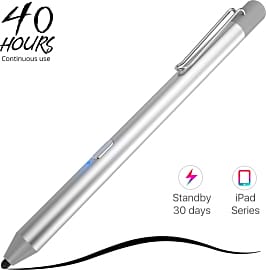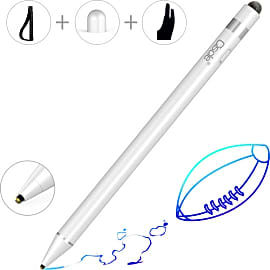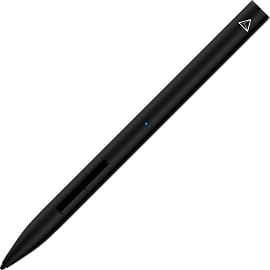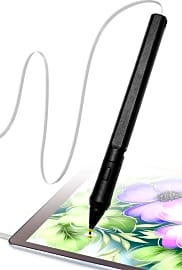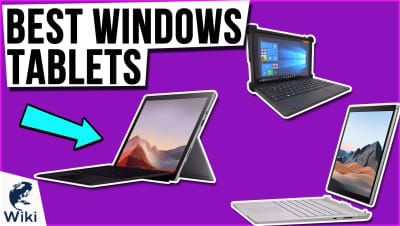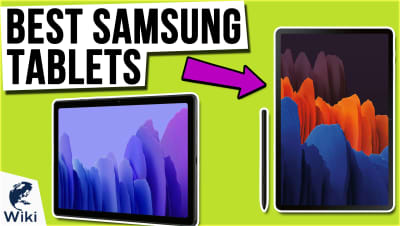The 10 Best Active Styluses

This wiki has been updated 38 times since it was first published in April of 2015. Active styluses are ideal for note taking, digital drawing or painting, and electronic document annotation. They're also great for accurate object selection and scrolling on your favorite mobile device, such as a smartphone, tablet, or Ultrabook. Find the perfect one from our comprehensive selection to unleash your artistic potential, or at least outperform your clumsy fingers. When users buy our independently chosen editorial selections, we may earn commissions to help fund the Wiki.
Editor's Notes
November 10, 2020:
The biggest limitation for any active stylus is compatibility. Unlike passive models, which make use of a touch screen's capacitive sensing without needing to involve software, these pens must connect with a device and a program in order to make use of their advanced features. Unfortunately, there's no such thing as a truly universal active stylus, since the biggest tech manufacturers use incompatible systems, and not all pens will work with all apps. The Microsoft Surface Pen and the Apple Pencil 2nd Generation are purpose-built for the tablets and hybrid devices of their respective companies, and it shows. They're precisely configured for the built-in software of their companion machines, meaning they pair seamlessly and draw smoother lines than their competitors. The Surface Pen was previously ranked lower due to the fact that it only works with a specific line of devices, but that's ultimately true of any smart pen until a universal standard emerges. We moved it up to reflect its excellent performance.
However, the #1 spot on the list goes to the Heiyo Dia Surface Pen, one of the few budget options that can challenge the performance of the name-brand choices. It offers the same pressure sensitivity and automatic pairing as the Microsoft Surface Pen, at a much lower price. It doesn't auto-charge while in use the way the more expensive model does, but with 500 hours of battery life, that's not too much of a sacrifice.
One interesting new addition is the GreenBulb SonarPen, which sidesteps the potential issues with Bluetooth connections and battery life by physically plugging in to a headphone jack. It does have some downsides: it won't work with some of the more popular apps for professional creatives, and its palm rejection could be better. Still, it's extremely budget-friendly for a pressure-sensitive stylus, and it will never run out of battery while you're using it.
If you're in creating digital art, you may want to review our list of the best drawing tablets, as well as looking into a stand to go with your device. Or if you need a good solution for note-taking, check out these digital pens that can record and upload what you write.
November 22, 2019:
Active styli are different from passive ones in that they have an internal power source that enables features like tilt recognition and pressure sensitivity. The Apple Pencil is by far the highest-quality option available, but as you might expect it's only compatible with iPads, and only recent ones at that. On the Windows side of things, the OEM Microsoft Surface Pen is a great piece of equipment as well, but it reportedly does not work with laptops from any other manufacturers. For Lenovo users, the Lenovo Pen 2 is among the most highly recommended. And while the Nintendo Switch is notoriously picky about which aftermarket accessories it works with, the BoxWave AccuPoint does appear to be completely compatible.
If you're using an Apple device and don't want to spring for the pricey Apple Pencil, the Logitech Crayon is slightly less expensive and almost as full-featured. The Heiyo Dia Surface Pen and Heiyo Beryl are both reasonably priced and work great with quite a few different devices; in fact, the Beryl works for even more laptops and tablets than it's advertised for use with. The Ciscle Pen is impressively low-priced and while it isn't terribly fancy, it does work quite well with most devices. Overall, though the Vorcsbine 4096 is one of the best deals, as it feels and operates like a high-end tool despite its relatively low cost.
How Active Styluses Work
Electrical components within an active stylus generate short-range wireless signals.
The active stylus, also known as the active pen, is a type of input device designed to emulate the familiarity of a pen in the human hand. As the pen has evolved with humans over the last 5,000 years of recorded history, it follows that active styluses should keep to its design.
Active pens generally find use in the realm of digital note taking, document annotation, and digital drawing or painting. The function of the active stylus is quite unique. Electrical components within an active stylus generate short-range wireless signals. These wireless signals are then picked up by a built in digitizer, which transmits messages about the pen's orientation, pressure, and minute movements to the pen's dedicated controller.
As the digitizer within the pen is constantly sending information to the computer, its exact location above the pad is always known. When an active stylus hovers over the control pad, the cursor on the computer will move to match its location. This removes the guesswork caused by passive styluses, eliminating erroneous marks and unnecessary edits from your work.
Active styluses also easily eliminate all palm marks from the work surface. As the human body is an electrical circuit, touching any part of the hand to the surface of a touchscreen or digital receiver can cause electrical impulses to translate into marks on the page. Both writers and artists usually touch their hands to the surface of their work space as they write or draw, making this potentially problematic. An active stylus eliminates this problem. The dedicated receivers only respond to signals sent from the pen.
The Psychology Of Writing
There may be many links between writing styles and a person's psychological state. Much about a person's personality is said to be displayed in their writing style, and as more studies are conducted into this theory, more links between the two are found. Graphologists say they can determine amazing things about a person–from physiological symptoms such as high blood pressure and ADHD to basic personality types– simply by analyzing their writing.
The way the writer dots their i's may actually tell a graphologist more about their personality than most things.
One way in which a graphologist analyzes writing is by looking at letter size. The size of written letters helps determine the difference between an introverted personality and an extroverted one. If the letters are small, taking up less than half of the provided line, the person is more likely to be timid and introverted. Large letters which take up all of the space on the line tend to indicate an outgoing, attention-seeking personality.
The way the writer dots their i's may actually tell a graphologist more about their personality than most things. Writers who place their dots perfectly above the letter are said to be the most organized and emphatic. A person who draws a small circle above the letter is said to possess a childlike quality. A high dot indicates a very imaginative writer, where a dash is the trademark of a critical one. A dot which is off to either side of the letter indicates the utmost laziness. These are just two ways in which a writer's mentality actually physically affects their handwriting.
Reasons An Active Stylus Is Better Than A Finger
Touchscreen technology has come a long way since E.A. Johnson created the first finger-driven capacitive model in 1965. There have been numerous revolutions in touchscreen technology over the years, including the invention of the resistive touchscreen. These touchscreens did not require an external electrical impulse to be controlled, making it possible to use a stylus as the input device.
Some would argue that notes can simply be taken with a pen and paper.
An active stylus takes it a step further, adding an advanced electrical impulse to the body of a stylus. This allows it to operate on capacitive touchscreens. This is not the only benefit of an active stylus, however. One thing to consider is the cleanliness of the touchscreen's surface. The hands are the way we interact with the outside world, and they pick up dirt, bacteria, and oil at every step of the way, from the money used to pay for coffee in the morning to the handrail on the subway. All of this leads to a dirty, potentially harmful touchscreen. Even when the hands are clean, the human body produces oils that can smudge the screen any time you use it. There is no such worry with an active stylus.
While the finger may be good enough to do basic functions on a touchscreen such as selecting icons or navigating a webpage, it falls short in many ways. Taking notes with an active stylus is far better than fumbling around with the finger. Some would argue that notes can simply be taken with a pen and paper. This is true, though an active stylus allows the user to quickly save those notes as a small file, which makes it very easy to catalog them or send them to others.
Digital artists and designers simply need an active stylus to emulate the fine strokes of a brush or pen. The multiple sensors and gyro-stabilizers in the pen help it determine which way it is being moved, which can create a different stroke or artistic effect as needed.




